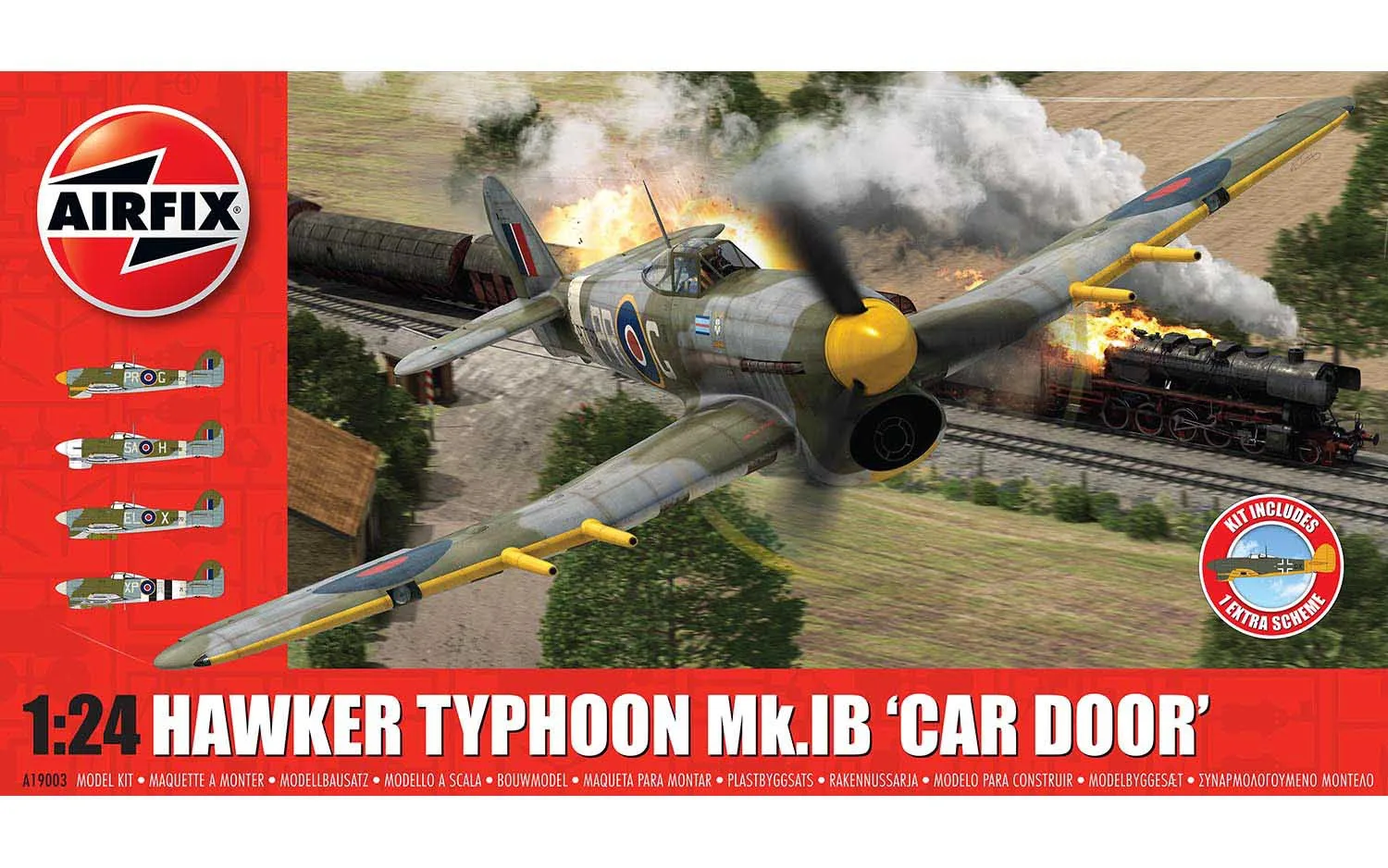Hawker Typhoon Mk.1B – Car Door
These early machines were somewhat rushed into service and it was discovered that a number of modifications would be desirable, if not totally essential. Perhaps the most noticeable difference from the later models were around the canopy area as the first Typhoons were supplied with a forward opening car door style cockpit entry for the pilot which even included a wind down window. The pilot also had a transparent roof panel, which hinged open to the left and some machines had the addition of a rear-facing mirror, on the canopy frame.
The new Typhoon scheme is a fascinating one and helps tell the story how all nations coveted airworthy versions of the enemys latest fighters during WWII. This RAF ground attack aircraft was hit by flak whilst crossing the coast of France at low level, with the pilot making a belly landing in the nearest field he could see. Unfortunately, he was captured before he had the chance to set fire to his aircraft, to prevent it falling into enemy hands he was taken prisoner.
The aircraft was taken to Rechlin (the German equivalent of Farnborough) where it was returned to airworthy status. It was operated as part of Zirkus Rosarius, a unit operating enemy aircraft types, evaluating their performance, hoping to establish their strengths and vulnerabilities. The unit would tour operational Luftwaffe bases (hence the Zirkus name), where squadron pilots had the chance to see the latest enemy aircraft at close hand, speaking with the pilot flying it, to discuss how best to better them in combat. This aircraft probably served in this role for around a year, before being written off in a landing accident just a month after D-Day.





